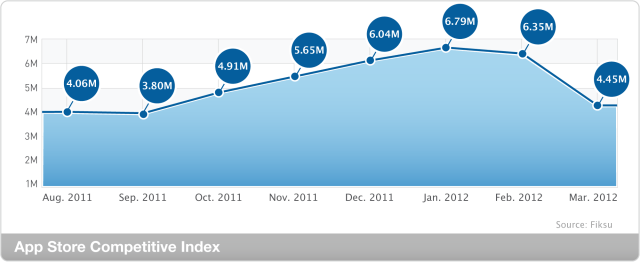This is the story of how a young Irish fine artist accidentally became a materials scientist, founding a high-growth company that created a whole new product category. It’s also a parable for how great entrepreneurs systematically create their own luck.
Jane ni Dhulchaointigh is the founder and CEO of Sugru, a London-based startup that makes an amazing moldable adhesive for repairing any physical object. It’s a cross between silly putty and duct tape, a space age rubber that can be molded into any desired shape by hand, and that sticks to a vast array of surfaces. With customers in over 100 countries, and all seven continents, Sugru has taken the world by storm.
What we see in Jane’s journey, so far from California’s tech startup scene, is the same thing we see in virtually all startups that work: the ability to harness
serendipity, the unplanned discoveries, large or small, that end up being the turning points in careers and businesses. Hard work, training and process may be the foundation of success, but serendipity is where the magic happens. And even though serendipity is by definition unpredictable, its appearance is anything but random.
Jane’s stunning rise is the result of her mastering what we call
the skills of planned serendipity, a set of behaviors that have allowed her, over and over again, to generate the chance discoveries, recognize the good ones, and take action on those that matter most.
Here’s how it happened, and what we can learn from her breakout success.
Start With A “Geek Brain”
Jane originally studied to be a sculptor, an interest that had possessed her for years. She returned to school in 2003 to study commercial product design at the Royal College of Art. It seemed a prudent career move given the high demand for designers (and the lack of jobs for sculptors), but it was a switch that proved difficult. Her impulse was to follow her own interests over solving the narrowly defined product problems discussed in class. Before long, her background in sculpture combined with her insatiable curiosity led her to begin experimenting with new materials.
Jane was equipped with one of the great advantages in cultivating serendipity, a geek brain–what we define as
an obsessive curiosity in an area of interest and the ability to notice anomalies, overcoming the conventional wisdom that constrains others. The geek brain gave Jane distance from the rote conventions of design school, allowing her to connect ideas from across domains in unusual ways.
Find Space to Play
Having a mindset geared for recognizing unexpected ideas is rarely enough on its own—Jane needed an environment that allowed her to explore and put this geek brain to good use. The workshop at her college served this purpose well:
I was destroying things and putting them back together: chipping blocks of wood apart and putting them back together with other materials…One experiment I did was combining silicone caulk with very fine wood dust from the workshop. From that combination I made these fancy wooden balls. I found it fascinating that you could make something that looked like wood but had other properties—if you threw them on the floor they’d bounce.
Jane’s early explorations with her strange rubbery material was driven by a fascination with the possibilities of what she could make, rather than any specific purpose to which it could be put. This is the hallmark of a true exploratory mode, as
premature focus can kill good ideas before they ever emerge. Still, as her discovery started to take shape, she began to spend more and more time wondering what it might actually be good for.
Be Opinionated
Jane’s boyfriend noticed that she had been using her funny rubber to repair or customize things around the house—enlarging a sink plug that was too small, or making a more ergonomic knife handle. It had been so natural for her to use the rubber in this way because she personally believed in the value of repairing her things rather than running out and buying a replacement. The instinct was so natural, in fact, that she hadn’t even consciously registered what she was doing. It was only when her boyfriend drew her attention to it that she saw the opportunity in a flash.
Jane had stumbled on a product idea that mapped perfectly to a deeply held conviction: she hated waste. She was fed up with it and knew she wasn’t alone. “In the past, some people would have thought that repairing something is a compromise because you couldn’t afford to buy it new again,” Jane says. “But now there are increasing numbers of people who would rather repair or reuse than throw something out and needlessly buy something new because of the waste involved.”
Her insight was that this space-age rubber she’d invented could be an essential innovation in this cause. S
he saw the potential in her chance discovery only because she had an overriding purpose that gave her a unique perspective. “Every granny who finds it hard to open a jam jar can manipulate this material,” she said. “Anyone who has a stiff part on their bike can adapt it to be whatever the bike needs.”
Project the Possibility
The only problem was that the material didn’t actually exist yet. The makeshift rubber Jane had been playing with had all kinds of problems: it didn’t adhere to enough surfaces, it had a terribly short shelf-life, and it was too high maintenance to make a successful commercial product.
This was the do-or-die moment. As an artist, there was every reason in the world to give up—she had no business thinking she could solve this incredibly technical problem. Instead, Jane pulled a Jujitsu serendipity move: employing only her faulty prototype and her storytelling skills, she projected her vision as broadly as she could, telling anyone who would listen about it. Early stage entrepreneurs like Jane don’t always know what exact outcomes to expect, but they are
willing to publicly put their ideas into the world, allowing them to connect with the as yet unknown people and opportunities that make their products possible.
It worked. Attention followed from the strength of her vision, attracting local press mentions, a set of science advisors, and a grant from the National Endowment for Science, Technology, and Arts.
Follow Unplanned Paths
The grant wasn’t huge, a mere £35,000, but it was enough to start testing materials—as long as Jane did the testing herself. To do that, she realized, she would have to
do something that was not only unexpected, but would have seemed absurd a few months before: she’d have to diverge from her career path and be trained as a lab technician and set up her own laboratory. She wasn’t waiting around to find a CTO who knew better. This former art student must learn to be a materials scientist.
It took her two years of painstaking trial-and-error, but eventually she created a brand new, patented class of silicone that worked for her aims. Only Jane’s immovable sense of purpose kept her going through month after month of laborious formulation and failure, long before her work would bear fruit. This is a recurring paradox of serendipity: stick-to-itness—the ability to stay committed to a purpose—is often the very thing that allows new paths to be recognized and taken.
Design Openness into the Product and Company
Initially there was tremendous pressure to fit the new product into a well-worn category that the traditional business world would understand. Then it struck Jane that she could create a brand designed to activate the creative spark in people. She could leave the product’s purpose intentionally open—the tagline would become “Hack Things Better”—so that customers could use their own imagination. One of the first things she did after launching the product was create an online community for customers to share their ideas.
Creating permeability at the edge of her company allowed new directions and opportunities to serendipitously emerge.
As a result the company and its customers have developed a truly symbiotic relationship. That “perfect fit” Jane had been seeking for her unusual rubber years ago? Her customers are telling her what it is—or rather, all of the perfect fits they’ve found. Repairing computers, cables for laptop chargers, phones, and outdoor equipment have emerged as the leading uses for her one-of-a-kind product. Jane is finding the company being pulled by customers in directions she could never have imagined during those years of painstaking materials research, but in each case the path is perfectly aligned with the company’s purpose.
The Kind of Luck That Matters
Entrepreneurs often cite “luck” as a key ingredient of success, yet this means far more than just being in the right time, right place. The luck that builds careers and companies is the kind that unfolds gradually, choice by choice, as people recognize and seize surprise opportunities, attracting others to them long before it’s obvious that their business is the next big thing. These skills of planned serendipity are not vague, metaphysical concepts; they can be mastered by any of us, and can shape how we run our startups as they grow.
We
can learn how to make our businesses luckier.
Source:http://techcrunch.com/2012/04/28/how-great-entrepreneurs-create-their-own-luck/?grcc=33333Z98ZtrendingZ0













 Winbladh says that while he’s always been bullish on mobile, in 2008, he started observing the increased pressure on brick and mortar retailers and was thinking through the ways that retailers can drive people in stores. He and his co-founders sought out to reinvent the gift card market to help drive traffic for retailers. He believes the gift card, which has gone through little innovation to date, can be made social, viral and mobile.
Winbladh says that while he’s always been bullish on mobile, in 2008, he started observing the increased pressure on brick and mortar retailers and was thinking through the ways that retailers can drive people in stores. He and his co-founders sought out to reinvent the gift card market to help drive traffic for retailers. He believes the gift card, which has gone through little innovation to date, can be made social, viral and mobile.